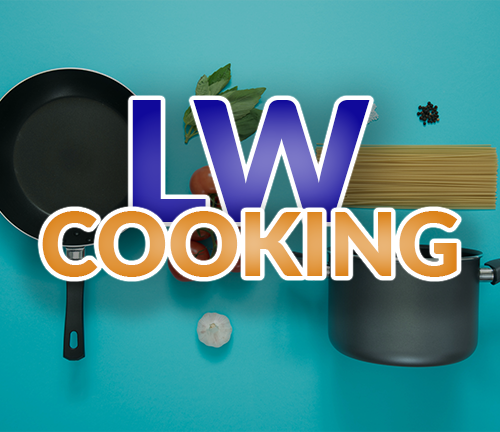Made a spinach, ham, onion, tomato pizza recently. It got me thinking.
Do yall typically sautée onions if you’re putting it on pizza? Just curious what others prefer. I don’t really have a preference. I like both.
Also I’ve been meaning to try it but does brushing the crust with olive oil or some kind of fat affect the presentation/flavor enough to be worth it?
(Asking about cooking in a typical household oven, not sure if it would be different with an actual high heat pizza oven)
So you can check my posts for more details on my bake, but after a few years of practice, and now running an, albeit small, pop up pizza business, I’ve got a few tips I can offer.
First, and foremost: the dough. I didn’t see you include any details about your dough in your post. Whats your hydration? What is your protein percent? Have you fermented it? If so, how many days? If this all sounds foreign to you, start here with Charlie Anderson’s recipe. Use the spread sheet calculator and figure out both your hydration and protein content before moving forward. I do a 65% hydration, 3 day ferment with 220 grams of the King Arthur high protein baking flower, 10 grams of sifted rye flour (per dough ball; I make 4 at a time, each is stretched to a 16 inch pizza). The hydration and protein content are the two most critical aspects of getting a good crust; imagine baking your pizza as a rapid dehydration: the protein content determines stretchiness and the “bubbliness”, and how thin you can get it, each of which contributes to how “golden brown” you can get it. There are some kneeding/ throwing techniques that can be used to augment this and get a more reliable, better “bubbliness”, but there is no substituting the recipe. Hydration is critical because water is going to begin to evaporate long before things begin to “bake” properly; both the mallard reaction and carmelization happen at much higher temperatures than the temperature at which water boils: the hydration of the dough mitigates both of these reactions. A great pizza is all about timing: the time it takes for water to leave the crust, with carmelization and the mallard reactions being able to happen on the exterior, but not the interior; how much moisture your ingredients are contributing; the temperature of the oven; the humidity of the air in your oven once you add the pie. Great pizza is about managing water.
What I can see in this image is that your hydration is too low. I can tell because of the outer crust has almost no browning, indicating that you both a) don’t have enough protein and b) haven’t been able to get the dough thin enough. Hydration will increase as the dough ferments and sugars are converted from c6h12o8 to co2 and h2o: as the yeast grows it breaks down sugar and adds bubbles and water. Also, you aren’t thinking about the relationship between the added moisture your ingredients are contributing to the bake. You’ve overloaded it with wet ingredients like fresh mottz, tomatoes, and ham (which can be fine, but you need to adjust your process to accommodate). The added moisture is going to cool off the air temperature in the locality of your dough; your dough needs to be able to accommodate for that. My bet is that this pizza has a ‘bread like’ or ‘cake like’ texture.
There is a recommendation here about a pizza steel or a stone, but honestly, I don’t think thats your issue, and those can cause more difficulty in a home oven than they solve. If you are going that route, I recommend a steel, not a stone. Stones take too long to give off their heat, and do almost nothing to transfer heat once they’ve given off whatever they have stored. A 3/8ths steel is far superior for a home pizza kitchen.
There is another comment about pre-cooking some ingredients. The only real point in this would be to drive off moisture before putting them on the pizza or to try and get some specific flavor profile. Its missing the point of the primary problem you are experiencing: your dough. Adding or brushing with oil is just masking the issue.
Overall, get a handle on your hydration and protein content. Shoot for >12% protein and >60% hydration to get into the range of “good” when considering only the crust. Don’t overload the pie with wet ingredients if your oven isn’t hot enough to drive that moisture off the pizza rapidly. You need to match the timing between how much/ how cooked you want the toppings and how much time the dough takes, relative to how hot your oven can get.
You can absolutely get better than restaurant pizza in an oven which only goes to 500-550 degrees, and you really don’t need to make many changes from what one might do in an oven capable of getting to 700-1100. But good pizza all starts and ends with the dough. And there is no short cutting it.
This is all good advice, but I would caution against pushing hydration too much if they’re using a regular home oven.
Sure you get bigger bubbles, but it’s really hard to brown the crust of a wet dough without burning the cheese if the oven tops out at 500F.
65% should be the absolute max for a home oven.
I agree in principal, but the thing about bigger bubbles, is that it creates more surface area and an overall thinner crust that can be stretched further.
The bigger the bubbles, the thinner the dough, the faster the evaporation, the better the browning.
But yeah. Its a dance.
The dough is just standard all purpose flour. I could maybe be more specific but I’m not knowledgeable enough about the different types to say. Probably about 5-8 hrs total rise time. Thank you for the response, by the way. There’s a lot of information for me to go through.
Buy this: https://shop.kingarthurbaking.com/items/high-gluten-flour and you will be 90% of the way there. Out of the bag, its the right protein content. Just use that straight up as the flour in charlie andersons recipe (for a 65% hydration) and you’ll get the results you are looking for.
This looks great! I’d make it the same way you have here and wouldn’t bother sauteing the onions either.
The oil on crust might help brown it a bit more, that’s the main reason for doing it.
Gorgeous pizza!
Thank you! I thought it looked pretty good too. I just can never seem to get that crisp look on the crust. Gonna try brushin it with some oil next time.
Do yall typically sautée onions if you’re putting it on pizza?
I’ll often cook bacon as a topping, set the bacon aside to cool, then sauté onions, peppers, mushrooms, etc. In the bacon grease.
I also typically broil each pizza at the end to get extra crisp on the toppings. It’s not a perfect pizza but it’s a great result for a basic home oven.
Steel or stone, preheated with the oven. (You could preheat that iron pan that I think I see under your pizza), as hot as your oven goes, 500f or 550f typically. 5-6 minutes at that temperature gets a good cook. A bit of oil on the crust helps.
Tried heating up the cast iron while I put on the sauce/toppings but it seems kinda tricky. Too long and the dough doesn’t retain a fluffy interior. With the right knowledge and timing I’m sure it can be done.
What about having it mostly pre formed on the side, and starting that timer the moment the dough touches the pan? (And work fast)
Precooked onions depend on what you’re trying to achieve with them. Caramelized is another story too.
I have noticed that simply coating the balls of dough with a bit of oil before proofing changes the color of the finished dough; a little more char.
Biggest thing, unfortunately, is high heat. Before I got a pizza oven, I was experimenting with two stones. One on top of the pizza. They need to be really hot, not just in the oven for a while.
Honestly your pizza looks great. Less can be more toppings wise if you’re making smaller pizzas at home.
Since you’re already fooling around with cast iron, maybe give this thin-crust tortilla “pizza” a try. https://www.seriouseats.com/extra-crispy-bar-style-tortilla-pizza-recipe It checks all the pizza craving boxes while being something a bit closer to a home kitchen fool proof recipe.
This looks great, well done. I like the cast iron pizza stone, I do the same.
If you’re not already, I find that using the full Neopalitan dough is worth it. The 00 flour, giving it time for a good rise, and stretching it (never rolling). All worth it. Just crank that oven up as high as it can go.
I don’t brush the crust with oil, but give it a try and see if you like it.
As for onions, I usually sautee them down.
Much appreciated, interesting points about the dough. I’ll be reading up on that a bit.
Play with temperature more. Your oven likely has warmer and cooler areas. Also, a warmer start with a longer, lower finish could achieve the browning you’re after.
Looks good to me. Only way to make it better is try out different dough recepies and styles and see if there is one you like more. Unless you’re going to commit and get a pizza oven cause stones and home oven are dogshit for pizzas.





